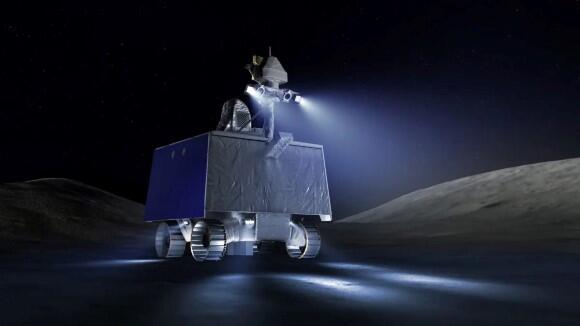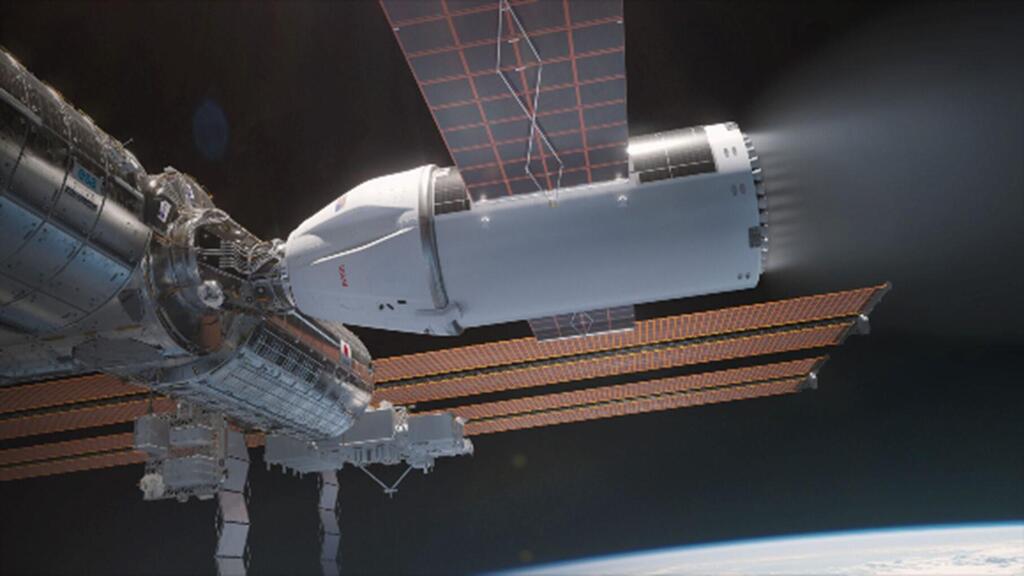Getting your Trinity Audio player ready...
Cancellation of the lunar rover mission
The United States space agency, NASA, has decided to cancel its plan to launch the VIPER ("Volatiles Investigating Polar Exploration Rover") unmanned wheeled robotic rover, which was designed to search for ice in the lunar soil. In the agency's announcement, it was stated that the decision was made due to escalating costs, delays in development, and concerns about further financial overruns as the project continues to be delayed.
The rover was originally scheduled to launch at the end of 2023, on a lander by Astrobotic, funded by NASA under the CLPS program—NASA's program to encourage private companies' missions to the moon. However, the rover's development faced delays, pushing the mission's timeline to the end of 2024 and then to the end of 2025.
The development of Astrobotic's lander is also being delayed, and earlier this year, its attempt to launch a first lunar lander (a different model) ended in failure, as the lander did not leave Earth's orbit due to a fuel leak discovered immediately after launch.
The original budget for the mission was about $433 million, but it has since surged by more than 30%, and the current cost is estimated to exceed $600 million. This figure was expected to rise further, given the slim chance that the rover and the lander would be ready for launch by the end of next year without further delays.
"In this case, the projected remaining expenses for VIPER would have resulted in either having to cancel or disrupt many other missions in our Commercial Lunar Payload Services line," said Dr. Nicola (Nicky) Fox, NASA Associate Administrator for Science. “Therefore, we have made the decision to forgo this particular mission,” he added.
Despite the cancellation, NASA plans to repurpose components and technologies from the VIPER project for other lunar exploration missions, primarily for the purpose for which the rover was developed—searching for ice beneath the surface in the south pole region of the moon. Scientists estimate that the ice in this lunar area could be used to produce water, breathable oxygen, and oxygen and hydrogen for rocket fuel and as an energy source. Therefore, the area is considered a preferred target for manned missions and the establishment of a base on the moon.
“We are committed to studying and exploring the Moon for the benefit of humanity through the CLPS program. The agency has an array of missions planned to look for ice and other resources on the Moon over the next five years,” added Fox. "Our path forward will make maximum use of the technology and work that went into VIPER, while preserving critical funds to support our robust lunar portfolio.”
Despite NASA's announcement, Astrobotic plans to proceed with the mission and land its lander, Griffin 1, on the moon to demonstrate its capabilities, potentially with a dummy payload to demonstrate that it can indeed land a payload of several hundred kilograms on the lunar surface.
4 View gallery


Now to be repurposed for components to be incorporated into other lunar missions due to the significant budget overrun. VIPER lunar rover
(Illustration: NASA)
Plotting a course to the UK
The Israeli space computing company Ramon.Space is setting up a development center in the UK, aiming to expand its penetration into the European market and enhance its collaborations with European space agencies. The center is set up in Surrey, not far from London, and will initially employ ten engineers to focus on developing hardware and software for space-based communication and computing systems.
Avi Shabtai, CEO of Ramon.Space, discussed the expansion on the Davidson Institute website, stating "Establishing a presence in Europe, similar to the company we established in the United States, will allow us to expand our activities there. The UK was chosen due to the favorable conditions for rapid growth, substantial governmental support for space ventures, and the relative ease of communication".
Shabtai added that the opening of the UK center aligns with the company's goal to increase its global activities. "Ramon.Space is a company with an Israeli center but with a global presence, so such expansion serves our strategic objective of becoming a dominant global player," he said. He clarified that there is no intention to reduce the company's activities in Israel. "The company's center is in Israel, and we will continue to grow in Israel. Ultimately, Israeli talent is among the best in the world in this field and will remain a key strength. We also believe that the Israeli space industry will continue to grow, and expanding into new areas only helps us realize our potential."
Ramon.Space's computers and other components have already been integrated into numerous space missions, including the European JUICE mission, which is en route to Jupiter. Last year, Ramon.Space signed a cooperation agreement with Taiwanese computer manufacturer Ingrasys, a subsidiary of the giant international corporation Foxconn, for the large-scale production of its space computers.
4 View gallery


Aiming to penetrate the European market with support from the UK government. Shabtai (left) with Tobias Marchant, Director of Collaborations at the British space corporation Space South Central
(Photo: Ramon.Space)
A rare malfunction of the workhorse rocket
The United States Federal Aviation Administration (FAA) has launched another investigation into SpaceX following a rare malfunction in the Falcon 9 rocket nearly two weeks ago. The rocket was launched from Vandenberg Air Force Base in California as part of a routine mission to deploy Starlink communication satellites. The first stage performed as expected and landed successfully on a sea platform. The second stage initially operated correctly, but when it was reactivated to place the satellites into orbit, an oxygen leak was detected, preventing further operation.
SpaceX decided to place the satellites into a lower orbit than originally planned and intended to use their onboard thrusters to reach the desired altitude. However, the thrusters were insufficient, resulting in the satellites being placed in an orbit with a low point of only 135 kilometers above sea level. At this altitude, atmospheric drag is significant, causing the satellites to lose altitude each orbit until they eventually burn up in the atmosphere.
Although the incident did not cause damage to people or property beyond the company's own losses, the FAA is required to investigate any malfunction involving civilian aviation or space vehicles. However, SpaceX has requested to continue Falcon 9 launches during the investigation, arguing that the malfunction "did not involve safety-critical systems or compromise public safety in any way."
The FAA has yet to respond to this request, and three Starlink satellite launches that were planned for launch this week are currently on hold. SpaceX is also set to launch two Norwegian communication satellites later this month, and has two manned upcoming Falcon 9 missions—one for the groundbreaking private Polaris Dawn mission, and another - to transport a crew of astronauts to be sent to the International Space Station. It is likely that even if SpaceX receives temporary approval to continue satellite launches, the manned missions may be postponed until the investigation is completed.
Jared Isaacman, the billionaire funding the Polaris program and slated to command its first mission, expressed his confidence in SpaceX following the incident. He tweeted " I can say from personal experience they [SpaceX] are very transparent when issues arise.[…] As for Polaris Dawn, we will fly whenever SpaceX is ready and with complete confidence in the rocket, spaceship and operations."
The Falcon 9 rocket can easily contend for the title of the most reliable launch vehicle in history. It has been in operation since 2010 and has recorded only two malfunctions in 14 years: an explosion on the launch pad in 2016 that destroyed the Israeli communication satellite Amos 6, and last week's incident. This is set against a record of 364 successful space missions, including 69 launches since the beginning of 2024. However, SpaceX must determine whether this malfunction is isolated or indicative of a broader issue in its production line and quality control, which is facing a historically unprecedented launch workload.
SpaceFlight Now YouTube video on the Falcon 9 rocket malfunction and its possible implications:
Upgraded tug for the Space Station
Amidst the challenges of resuming Falcon 9 flights, SpaceX unveiled this week the initial design of a tug spacecraft engineered to safely deorbit the International Space Station (ISS) at the end of its operational life. This spacecraft is an enlarged version of the "Dragon" spacecraft used to transport humans and cargo to low Earth orbit. Designed primarily to generate thrust, it will be equipped with multiple engines. SpaceX stated in a tweet that the tug will carry six times more fuel than a regular Dragon spacecraft and generate four times the thrust.
Last month, NASA announced that SpaceX had secured a contract to develop the spacecraft that will ultimately tug the station to burn up in the atmosphere, valued at $843 million. The ISS is expected to conclude its operations around 2030, by which time Axiom Space plans to have established a private space station using its own infrastructure, which will eventually connect to an independent infrastructure system.
NASA provided further details this week on the planned process for the ISS's end of operations and deorbiting. NASA's ISS Program Manager, Dana Weigel, explained at a press conference that the tug will attach to the station 12 to 18 months after it ceases routine orbital adjustments and begins to gradually descend due to atmospheric drag. Astronauts will continue to maintain the station until about six months before its final reentry, when it will be at an altitude of approximately 220 kilometers (down from its current orbit of 400 kilometers).The spacecraft will then maneuver the station into an orbit that ensures its maximum burn-up upon reentry into the atmosphere and ensures that any remaining debris falls into a remote sea area, likely in the South Pacific Ocean, without posing a risk to property or people.
4 View gallery


Thrusting for a safe destruction. SpaceX's tug spacecraft will lead the ISS through its final reentry into the atmosphere
(Illustration: SpaceX)
The intriguing seas of Titan
The Cassini spacecraft's mission to explore the Saturn system ended almost seven years ago with its deliberate crash into Saturn after about twenty years of operation. However, the joint project of the United States and European space agencies continues to provide new insights from the extensive data collected during the spacecraft’s operational years.
An article published this week sheds new light on the seas in the northern polar region of Titan, Saturn's largest moon. These seas do not contain water but hydrocarbons, primarily methane (CH4) and ethane (CH3-CH3), which remain in a liquid state due to Titan's extremely low surface temperatures.
A team of scientists led by researchers from Cornell University analyzed data from radar scans collected by the Cassini spacecraft during four passes over Titan's north pole in 2014 and 2016. Unlike typical scans, where the radar signal is reflected directly from the surface back to the spacecraft that sent them, these scans were bi-static—the radar signal was reflected to a measurement station on Earth.
This complex technique allows for the measurement of additional properties, such as the polarization of the reflected signal. In an article published this week in Nature Communications, the researchers report that the composition of hydrocarbons in Titan's seas varies by latitude.
They also discovered that the seas mainly contain ethane, while the rivers feeding are predominantly methane, with the two hydrocarbons mixing near the river mouths. “This fits nicely with meteorological models for Titan, which predict that the ‘rain’ that falls from its skies is likely to be almost pure methane, but with trace amounts of ethane and other hydrocarbons,” said Philip Nicholson, a professor in the Department of Astronomy at Cornell and one of the co-authors of the article.
If you are a surfing enthusiast, Titan might not be the ideal destination for your next vacation. Measurements revealed that wave heights in Titan's three northern seas are only about 3.3 millimeters, with slightly rougher conditions near the coasts and river mouths, where waves can reach up to 5.2 millimeters high.
These findings are just the beginning, according to Valerio Poggiali, head of the research team at Cornell. “There is a mine of data that still waits to be fully analyzed in ways that should yield more discoveries. This is only the first step.”
4 View gallery


Smooth sea, but an intriguing climate system. The three largest seas and several lakes near Titan’s north pole, in a colorized image by the Cassini spacecraft
(Photo: NASA / JPL-Caltech / Agenzia Spaziale Italiana / USGS)
<< Follow Ynetnews on Facebook | Twitter | Instagram >>

